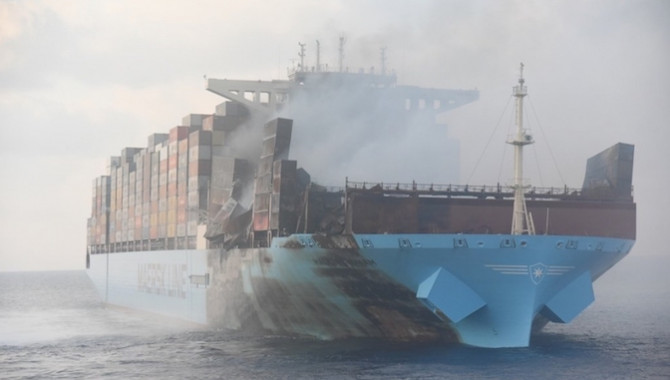
Depending on which way you look at it the glass is half empty or half full when appraising the latest total ship loss data from Allianz. In 2018, 21 total losses were reported in the Asia Pacific – a steep decline from the 46 ship losses in 2017, apparently driven by a decline in activity in the global loss hotspot, Southeast Asia, and weather-related losses after a quieter hurricane and typhoon season.
On the other hand, the number of reported shipping incidents overall in Asia increased by 22% in the past four years, according to analysis from 4,000 insured vessels by Allianz Global Corporate and Speciality. Allianz believes the adverse results have occurred as a result of the volume of ships navigating the region rather than falling safety standards.
“We do typically see more incidents of groundings and collisions in Asia than other locations around the world, but this generally reflects the higher levels of trade and where ship owners are trading,” says Tom Taberner, Regional Head of Energy & Marine Asia Pacific at AGCS. “In many cases port infrastructure in Asia is new and there are many new or expanding ports in China, Korea, Japan and Malaysia etc. Newer infrastructure means fewer issues, better port operations and more up-to-date charts, which will address challenges.”
Asia Pacific waters remain a hotspot for marine claims with four of the top 10 loss regions globally in 2018 and half of the top 10 largest losses also occurring in the region. The South China, Indochina, Indonesia and Philippines maritime region is still the op loss region, where one in four losses (12) globally occurred in 2018. It is encouraging to note that the figure is down significantly from 29 a year earlier. This marks the first time the region has seen a fall in losses in four years.
Cargo ships (8) accounted for more than a third of vessels lost around Asia Pacific in 2018. Foundered was the major cause, accounting for 14 of the 21 losses regionally – more than three times as many as the next highest cause – wrecked/stranded. Global results follow this trend, where sinking has accounted for over half (551) of the 1,036 vessels lost globally over the past decade and are the most expensive cause of loss for insurers, accounting for US$1.56bn in five years.
The frequency and cost of collision, grounding and fire incidents has increased in some locations for Asian-based shipowners and managers. There were 425 collisions or contact incidents during the past 12 months, with the average cost of collision claims highest on containerships (US$840,000). Overall, collision incidents are the second most frequent cause of claims in the region behind machinery breakdown/engine damage (462 incidents).
Fires continue to be of concern with 34 reported incidents over four years, at a total cost to the region’s insurance sector of almost US$50m. The trend has been most noticeable on containerships and car carriers, with a number of losses in 2018 and 2019. “We have seen a rise in incidents involving car carriers, which are becoming more expensive. This is a major concern with fires on the Auto Banner in My 2018 and most recently the Sincerity Ace in January 2019, say Mr Taberner.
Looking forward, Allianz maintains that the Sulphur Cap 2020 regulation is likely to be a game-changer for the shipping industry, with wide-ranging implications for cost, compliance and crew. In addition, political risk has also heightened globally and increasingly poses a threat to shipping security, trade and supply chains through conflicts, territorial disputes, cyber attacks, sanctions, piracy and even sabotage, as evidenced by recent attacks on oil tankers in the Middle East. Growing numbers of migrants at sea and an increase in stowaways on commercial vessels also has serious consequences for shipowners, leading to delays, diversions and pressure on crew.
Source:
hongkongmaritimehub
The opinions expressed herein are the author's and not necessarily those of The Xinde Marine News.
Please Contact Us at:
admin@xindemarine.com

